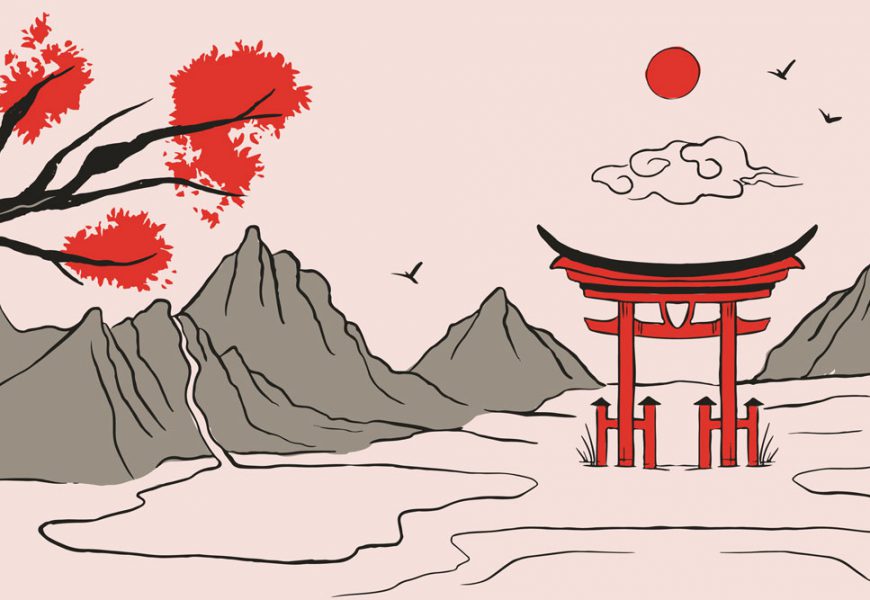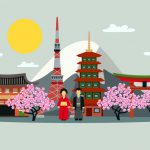One of the top languages used globally and on the Internet, the Japanese language offers its speakers many benefits, especially to foreign nationals. Mastering the Japanese alphabet can open many doors for you professionally and personally. With many top-notch Japanese companies such as Sony, Suzuki, Mitsubishi Electric, Honda and Toyota, to name a few, setting their bases in India, and programs such as TITP and SSW constantly seeking to fill the employment gap in Japan, the need for skilled workers who speak Japanese is on the rise.
However, learning to read and write the Japanese alphabet is not an easy feat for beginners. But fret not, for in this article, we will show you all that you need to know about the Japanese alphabet.
Before we delve into the topic at hand, you need to know that there are three main Japanese writing systems:
- Hiragana (ひらがな)
- Katakana (カタカナ)
- Kanji (漢字)
Hiragana
Hiragana is a phonetic lettering system and is considered the basic way of writing in Japanese. It has 48 base characters, out of which are 8 singular vowels – あ [a], い [i], う [ɯ], え [e], お [o].
It is mainly used to write grammatical and functional words like particles, adverbs and names for plants or animals. In appearance, they look curly as they are shaped like English cursive. It is also used to replace Kanji.
Hiragana Script
あ い う え お
か き く け こ が ぎ ぐ げ ご
さ し す せ そ ざ じ ず ぜ ぞ
た ち つ て と だ づ で ど
な に ぬ ね の
は ひ ふ へ ほ ば び ぶ べ ぼ
ま み む め も ぱ ぴ ぷ ぺ ぽ
や ゆ よ
ら り る れ ろ
わ を ん
Hiragana Combinations
きゃ きゅ きょ
ぎゃ ぎゅ ぎょ
しゃ しゅ しょ
じゃ じゅ じょ
にゃ にゅ にょ
ひゃ ひゅ ひょ
みゃ みゅ みょ
りゃ りゅ りょ
ちゃ ちゅ ちょ
びゃ びゅ ぴょ
ぴゃ ぴゅ ぴょ
Katakana
With each letter representing the sound of the syllable, Katakana is used for loan words that cannot be further translated into Japanese. These words may include names of companies or animals or countries. For example, Russia is written as ロシア.
While there are 46 basic Katakana (gojūon) in modern Japanese, there are also other modified scripts-
- 20 dakuon
- 5 handakuon
- 36 yōon, 1 sokuon
- 6 additional letters
Katakana characters appear sharper and block-ish, making them look more angular.
Katakana
ア イ ウ エ オ
カ キ ク ケ コ ガ ギ グ ゲ ゴ
サ シ ス セ ソ ザ ジ ズ ゼ ゾ
タ 千 ツ テ ト だ ヂ ヅ ゼ ゾ
ナ 二 ヌ ネ ノ
ハ ヒ フ へ ホ バ ビ ブ ベ ボ
マ 三 ム メ モ パ ピ プ ぺ ポ
ヤ ユ ヨ
ラ リ ル レ ロ
ワ ヲ ン
Katakana Combinations
キャ キュ キョ
ギャ ギュ ギョ
シャ シュ ショ
ヒャ ヒュ ヒョ
ビャ ビュ ビョ
ピャ ピュ ピョ
ミャ ミュ ミョ
リャ リュ リョ
チャ チュ チョ
Kanji
Introduced to Japan in the 5th century, Kanji consist of over 50,000 characters and are mostly used to write adjectives, adverbs, verbs, and nouns. They are classified as Pictographic, Indicative, and Compound characters. They form words or ideas.
To learn Kanji, you would require four to six weeks in a Japanese learning school. Moreover, you would need to learn at least 100 kanji characters to clear the N5 level of the Japanese Language Proficiency Test (JLPT).
Kanji
心 こころ
愛 あい
人 にん・ひと
金 おかね・きん
夢 ゆめ
桜 さくら
私 わたし
本 ほん
食 たべる・しょく
円 えん
門 もん
筋肉 きんにく
写真 しゃしん
夜 よる
車 くるま
温 おんせん
山 やま
盆栽 ぼんさい
丼 どんぶり
時計 とけい
雪 ゆき
猫 ねこ
卵 たまご
足 あし
海 うみ
麺 めん
寺 てら
書 しょ
神社 じんじゃ
忍者 にんじゃ
動物 どうぶつ
魚 さかな
漫画 まんが
電車 でんしゃ
場 ゆ
歌 うた
船 ふね
城 しろ
防災 ぼうさい
刺身 さしみ
花 はな
冬 ふゆ
天気 てんき
侍 さむらい
滝 たき
玉 たま
卒業 そつぎょう
Difference Between Hiragana, Katakana and Kanji
The table below shows the main differences between Hiragana, Katakana and Kanji.
| Hiragana | Katakana | Kanji |
|---|---|---|
| Mainly used for writing grammatical and functional words. | Used to write loan words such as names of countries or companies. | Used to write adverbs, verbs, nouns, and adjectives. |
| Phonetically spell out Japanese words. | Phonetically spell out foreign words. | Not a phonetic syllabary. |
| Characters are curly shaped like English cursive. | Characters are sharp and look like blocks. | Logographic Chinese characters. |
Rōmaji
Apart from the three Japanese writing scripts, there is another script that is used occasionally called Rōmaji. Brought to Japan in the 16th century by the Portuguese, Rōmaji (also known as the Roman alphabet) is used to write the Japanese alphabet into Roman characters. In other words, it is a romanised spelling used to interpret Japanese.
Modern systems of Romaji include Hepburn romanisation, Nihon-shiki romanisation and Kunrei-shiki romanisation.
Free Hiragana And Katakana Resources
Thanks to the Internet, especially Youtube tutorials, there are many different ways to learn to read and write Hiragana And Katakana. Here, we have compiled a list of free resources that we believe will help you enhance your Japanese language skills.
Free Hiragana Resources For Beginners
- Learn ALL Hiragana in 1 Hour – How to Write and Read Japanese: https://www.youtube.com/watch?v=6p9Il_j0zjc
- Learn Hiragana ひらがな (Japanese alphabet): https://www.youtube.com/watch?v=Bsfi4XbPE8M
- How to Read and Write Hiragana Alphabet | Learn Japanese for Beginners: https://www.youtube.com/watch?v=wD3FJgij79c
Free Katakana Resources Beginners
- Learn ALL Katakana in 1 Hour – How to Write and Read Japanese: https://www.youtube.com/watch?v=s6DKRgtVLGA
- How to Read and Write Katakana Alphabet | Learn Japanese for Beginners: https://www.youtube.com/watch?v=rf-n_qI2occ
- The Easiest Way to Learn KATAKANA #1 │JAPANESE AMMO: https://www.youtube.com/watch?v=ZT6upZrmmnA
Where To Learn Japanese Style of Writing In India?
Joining forces to ensure that Indian skilled workers get their dream jobs in Japan, the Indian and Japanese governments have started many programs such as TITP (Technical Intern Training Program) and SSW (Specific Skilled Workers Program). Under such programs, not only will you be taught the Japanese language along with the rich cultural heritage of the Land of the Rising Sun, but you will also get the opportunity to live and work in Japan.
Located in Gautum Nagar, New Delhi, Akal Japanese Academy offers the best scope and education for those who wish to migrate to Japan for an opportunity of a lifetime. With a team of Japanese language experts who dedicate their time and energy to providing the best education to the students and trainees, there is no better place to learn the Japanese alphabet in India.
Conclusion: Learning a new language can be challenging and time-consuming, especially a language as complex as Japanese. However, if you put in the time and effort, we are confident that you will master the language soon enough. Also, we advise that you set aside at least an hour or two to focus solely on your Japanese alphabet everyday.
We hope this article helps you in your journey to achieving your next goal.
We will leave you here with our best wishes!
Until next time, Sayonara for now!




